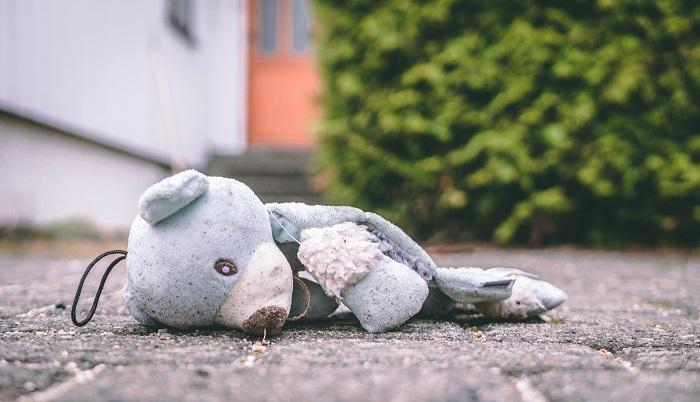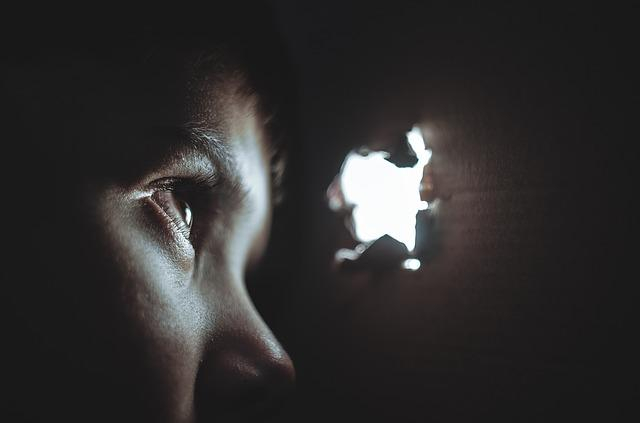Childhood Suicides in Muslim Communities - A Problem We Cannot Ignore (Part One)
Current Events
|
Apr 30, 2019
|
7 MIN READ

By Nargis Rahman
TRIGGER WARNING - This post discusses sensitive topics pertaining to childhood suicide and bullying but contains NO graphic imagery.
Editorial note: With the rise of Muslim children committing suicide in communities across the U.S. and Canada this past year, writer Nargis Rahman is diving deep into exploring the roots of childhood suicide, signs we need to look for and ways we can help in this two-part series. Part one explores the rise of childhood suicide and what to look out for. Part two will cover the causes of childhood suicide and depression and offer more resources for Muslim families and our communities at large.
Amal Alshteiwi, a young Syrian refugee, recently committed suicide after reportedly being bullied by classmates in Canada. Despite fleeing the Syrian war three years ago and changing schools due to the bullying, the nine-year-old was then emotionally and physically abused at her second school. Her family said they reported the bullying and nothing was done, which later led to her death. The Calgary Board of Education of her school said they did not find any evidence of bullying. Her death sent shockwaves throughout Muslim communities in Canada and in the U.S.
Like Amal, Muslim youth are in a time of elevated political hostility toward Islam and Muslims, with politicians pushing out harmful legislation, such as the Muslim Ban, and perpetuating speech that directly targets prominent Muslims (like Ilhan Omar) or Muslims in general. Some are fleeing from war and trying to build a new life and may be facing effects of PTSD.

The Journal of Muslim Mental Health suggests that Muslim youth globally feel increased stress from various social, environmental and cultural factors. There is little research on the overall mental health needs of the youth, however a study on American-born Muslims led by the Institute for Social Policy and Understanding suggests more Muslim youth and young adults are willing to talk about mental health and get professional psychological support and help.
Depression and suicide are increasing in general in American youth. According to the Centers for Disease Control and Prevention, suicide is the third leading cause of death for adolescents 10-24 years-old. Dr. Eric Ayers is the program director for Internal Medicine and Pediatrics at Wayne State University/Detroit Medical Center. He said suicide is “a problem that crosses all sociopaths-economic barriers and races. It is an endpoint in a process of devaluation in multiple areas and can be a mighty scream for help that may not be heard if we are not listening and looking for the signs.”
Last year Hannah Allam wrote about the rise of suicidal thoughts and suicides in Muslim communities and the lack of support within our religious and cultural communities for the living and the dead. The rise of suicidal thoughts and actual suicide among Muslim children is a subset of this group that merits more attention. Young Amal’s tragic story is proof of that. In many cases the topic of mental health is still taboo to talk about, and the Muslim community is not well-equipped to support people who need mental health services.
Dr. Saba Maroof, a child, adolescent and adult psychiatrist, said depression is the number one risk factor for children who consider suicide.“We don't often talk about suicide in the community nor do we want to. However, depression is a condition that is found across cultures and age groups, and with that, hand in hand, we find individuals struggling with thoughts of suicide.”
Warning signs may be increased anxiety, stress, social withdrawal, mood swings, erratic behavior, poor or nonexistent sleep, a drop in grades, self harm (such as cutting). Risk factors can include untreated depression or anxiety, a family history of suicide, alcohol or drug abuse and other possibly undiagnosed mental health illness.

Experts say the most important advice for parents, educators, friends or onlookers regarding someone who says they will kill themselves is to take it seriously and don’t push it aside. For some kids like Amal, long-term bullying can take a serious effect on one’s well being. Whether as a trusted adult you’re simply listening, connecting the child to resources or intervening in their mental well-being, taking suicide seriously is an important step in the right direction. Unfortunately, Nasra Abdulrahman, Amal’s mother told Global News that she contacted Amal’s teacher up to four times with no avail.
How do you know if your child is depressed or suicidal? Here are some things to look out for and ways you can help.
1. Build a strong relationship. Keep a door open for communication and listen to your children. Spend one-on-one time on a regular basis with each child, and give them your full undivided attention. (Put phones away if you can.)
“Something you can do as well is examine your own relationship with your child or teen. Have you fallen into unhealthy communication style? Are you constantly correcting, scolding or reprimanding them? Focus on the positive, pick your battles. Do not nitpick about every single thing your child does wrong,” says Dr. Maroof.
She adds that parents are children’s first advocates. They can be encouraging, supportive and positive when engaging with children. “While teens rely on their peers, they still need their parents at all ages and stages. They still need time, attention and affection.”
From the Quran we can see that supportive, encouraging parenting is exemplified. Prophet Ibrahim (allayhis salam) discussed his dream to sacrifice Ismail (allayhis salam) and asked his son’s opinion before he carried out the command by Allah. Ismail (AS) told his father to obey Allah and that he hoped to be patient. Allah saved Ismail from sacrifice by replacing him with a lamb and accepted Ibrahim’s efforts.
2. Pay attention to signs. Children will not always open up. Look for mood swings, mood dips or irritability, especially after children have engaged with others on social media or after texting. At times anxiety, worrying about current and future events, or depression, feelings of prolonged sadness, may be diagnosed through a normal screening at the pediatrician's office. Talk to your pediatrician about any of your concerns as well.
Dr. Ayers has recently seen trends of children coming in with more anxiety, depression or symptoms of bipolar disorder, stemming from trauma. “Kids more and more are using packs as an extension to induce or entice others.” He said while anxiety can keep kids engaged and worried with their own thoughts, depression is often caused by different types of bullying, which may lead to suicide.

3. Don’t downplay their feelings. Children mature at a different level. Understand that they cannot think and feel like an adult. “The best way to support your child, especially your teen, when they are depressed is to normalize getting help!” Seeking therapy is not shameful, nor is it shameful if children need to talk to someone other than their parents.
4. Encourage problem solving. Allow children to figure things out by writing out their feelings and talking to you or a trusted adult about their situation. Parents can also notify a child’s school counselor or administration to step in and further advocate for their children.
5. Know your children's friends. Dr. Maroof says knowing your children’s friends and their parents may help you keep tabs on your kids. If you’re open and approachable, your child’s friends are more likely to seek you out when your kid is in danger. Get children involved in positive spaces such as youth groups at the mosque or afterschool activities that promote opportunities to build positive relationships and self-esteem.
Suicide is one of the leading causes of death in adolescents. Before we have more children like Amal who lose interest in life due to any number of reasons - including but not limited to ongoing bullying and depression - Muslim communities need to come together to talk more openly about suicide and advocate collectively to help the youth.
Building a strong, supportive and encouraging home environment; paying attention to early signs of anxiety, depression and other mental health factors can be instrumental in assisting the Muslim youth. Teaching children to have healthy coping methods, make good and positive friends and keep an open relationship with their parents are also ways to keep tabs on the kids.
While ISPU’s study suggests Muslim American youth are more willing to speak about mental health and access professional services, we have a long way to go. The study recommends increasing community education about mental health, hiring Muslim chaplains at universities to become allies for the Muslim youth along with finding culturally competent health professionals to tackle a mental health crisis.
Furthermore, experts say that one of the biggest factors in addressing the stigma about mental health and preventing suicide is simply, talking about it. Stay calm, and never take it lightly if someone says they will commit suicide.
Check back this week for Part Two of our series on childhood suicide.

Subscribe to be the first to know about new product releases, styling ideas and more.
What products are you interested in?

